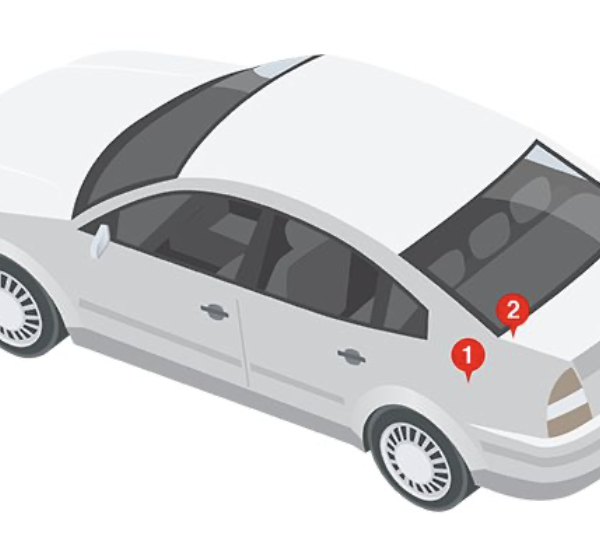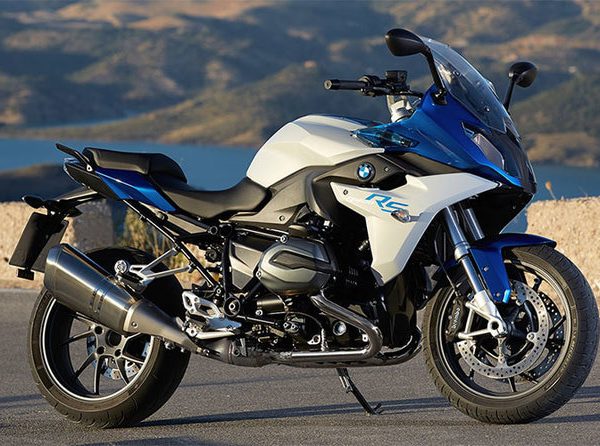The History of the Ford Mustang
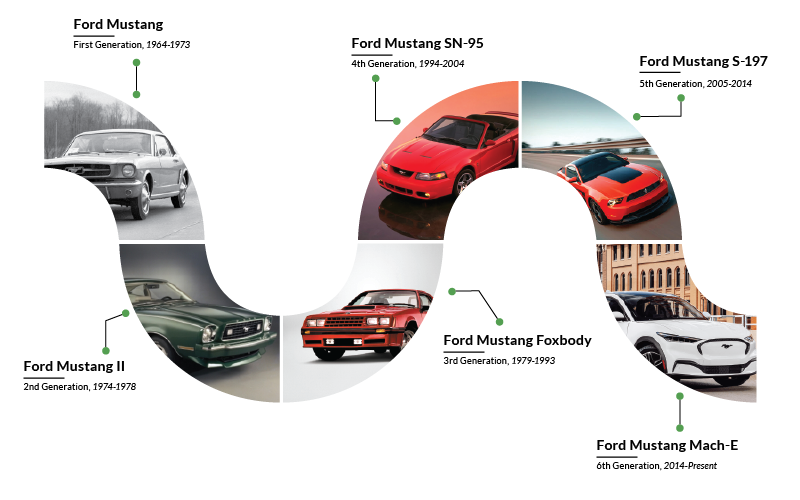
A New Type of Car
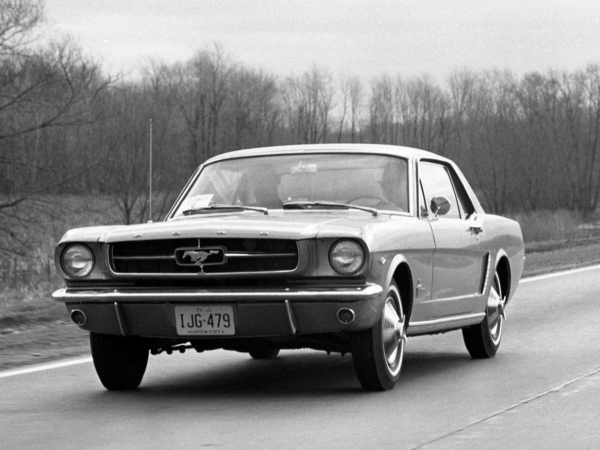
For over 50 years, people have been driving the Ford Mustang. It’s quite rightfully an American classic, immortalized in film & television (in everything from Bullitt to The Princess Diaries.) There’s even a whole song about how much fun Sally is having now that she is single and in possession of a Mustang. And you can’t even fault Ford for the total pop culture saturation because it’s an incredibly cool car. But the story behind the Mustang is just as interesting as the cars themselves. Let’s take a journey through the history of the first pony car.
Lee Iacocca, general manager and Vice President of the Ford Division, wanted a small car. Something fast but affordable. The Ford Thunderbird was a rousing success but with an exorbitant price tag, most people couldn’t afford the privilege. This new project would allow a wider audience to have access to the much coveted sports car. So Iacocca tasked Ford’s three design studios to create this brand new type of car. The requirements for this new sleek and sporty thing included seating for four, a standard floor shift, and (after consulting with their marketing department) options to make the car more customizable for the buyer. They also capped the weight at 2,500 pounds and the length at 180 inches. It would also have to sell for under $2,500 (around $21,000 in 2021 dollars). The design studios had two weeks.
At the end of those two weeks, it was the Ford Studio that had the winner. Their sporty notchback coupe design went into production in early 1964 (While they are officially given 1965 VINs, these early cars are fondly called 1964 1/2s by fans). Enthusiasm for Ford Designs’ prototype was incredibly high, with Ford engineers bending in-house manufacturing and engineering rules because they could not bear to make changes. Innovations included the torque box, which allowed the vehicle to handle better. The developers had also cribbed elements, like the chassis and suspension, from the Ford Falcon and the Ford Fairlane to lower development costs. Going along with the command for customization, there would be many choices for what went under the hood. Ford customers could choose between a convertible and a coupe, four different transmissions and three different engines. Names for the new car had been thrown around, with “The Cougar” being favored for a time. Eventually, they gave it the name of a critically loved but never mass produced prototype: The Mustang.
The First Mustang & The Sequel
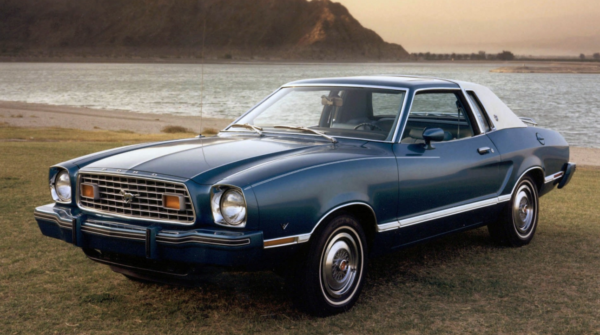
While everyone who saw it at Ford became obsessed with the car, The Mustang was creating buzz in the outside world as well. As a tease of what was to come, they brought an experimental prototype show car called The Mustang II to car shows. This show car was actually a modded version of the yet unreleased Mustang. The wild critical acclaim it received drove up excitement but that was only the beginning. A marketing blitz ensued with the company taking out thousands of ads in newspapers and magazines across the country. Ford officially introduced the Mustang on a grand stage: The 1964 World’s Fair in New York. They told the assembled press that their new and innovative vehicle was now available to purchase. For some companies that might have been enough. But the night before, Ford had also bought airtime on NBC, ABC, and CBS. An estimated 29 million people watched these spots extolling the Mustang’s virtues.
Their efforts paid off in a bigger way than they could have ever anticipated. The week of the 1964 World’s Fair, Lee Iacocca and the Ford Mustang were put on the cover of both Time and Newsweek. They had planned to build 47,000 cars through May and sold 22,000 on the first day. The original projection for first year sales was 100,000. The actual number of Ford Mustangs sold was around 400,000. The already generous options over the next few years expanded even more. A fastback Mustang became available six months later. Ford introduced the GT equipment group in 1965 and worked with Shelby American to create the iconic Shelby Mustang. By 1966, one million Mustangs had been built. Ford had a massive hit on their hands and their competitors scrambled to make their own pony cars. Ford completely dominated the Sixties. Unfortunately, the Seventies were coming.
In 1967, Ford made the Mustang bigger to accommodate a larger engine. And with each successive year, the car got bigger and bigger. By 1973, that sleek and sporty little car had ballooned into a sedan with a horse on the bumper and sales were dropping. There are a couple reasons for this. The world was changing. The new style of car they had pioneered had been picked up by other companies. They now had competition. Environmental laws started to take effect and people wanted smaller, more fuel efficient cars. Ford Mustang aficionados were also displeased with how big the car had become. A stockholder even berated Henry Ford II at a stockholder’s meeting saying “…you blew it up to the point where it lost its identity.” The company took these complaints to heart when they readied the second generation of Mustangs.
Derived from the tiny Ford Pinto (which had its own problems), the new Mustang was 19 inches shorter and 900 pounds lighter than its immediate predecessor. It was the first American car to utilize a power assisted rack and pinon steering system. The car’s base engine was the first one in the US built to the metric system. But most importantly, they dropped a 20 mile per gallon car in the middle of a fuel crisis. Almost exactly a month after Ford started selling the new tiny Mustang, OPEC announced an oil embargo against several Western countries, including the United States. Oil prices in the US rose nearly 300% and rationing created long lines at the gas station. Such a fuel efficient Mustang suddenly looked very good to Americans. In 1974, Ford sold 384,000 Mustang IIs. It was also named MotorTrend’s Car of the Year. With such accolades and sales, it makes sense that this generation lasted a whole five years.
So how did one generation’s critical darling become a modern punching bag? Well… remember how small and light the Mustang II was when it was introduced? It was partially kept that way by only offering V4 and V6 cylinder engines. The horsepower offered by those engines topped out at 88 and 104, respectively. For reference, the 1964 ½ model’s highest hp topped out at about 271. It probably also didn’t help that it shared DNA with a car that caught on fire sometimes. The Mustang II was the right car for the time but times were changing. While the Mustang II never reached its first year heights, they sold fairly well. But with the oil crises waning, people were done with practical cars and trending back to something a little flashier. Ford recognized this. They put in place plans for the next generation and abandoned their sweet little nerd of a Mustang to history’s unkind eyes.
While the Mustang II was out there in the world doing its best, Ford had been busy planning for the future. They needed something fuel efficient, because those EPA rules hadn’t gone away. But how to prove that they were still Ford without those gas guzzlers? The answer came from Europe in the form of the Ford Fox Platform. Similar to the subcompact cars across the pond and influenced by the designs of the now Ford owned Carrozzeria Ghia, this new architecture was streamlined and light. Ford also wanted a versatile base that could fit sports cars and family cars alike. The thought was that having an architecture that could be used for a large variety of cars would cut production costs. And how did that go? The third car to be based off the Fox Ford Platform (after 1978’s Zephyr and Fairmont), the third generation of Mustang came out in 1979 and lasted until 1993.
Fox Body Mustang
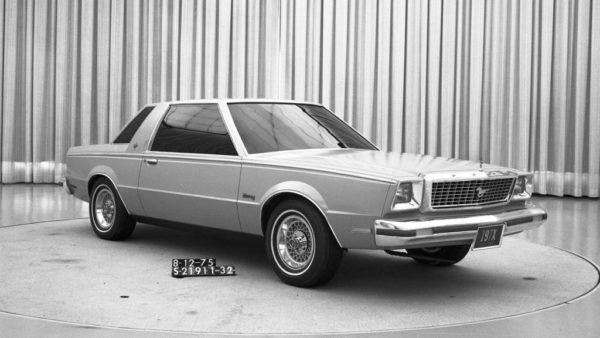
Fondly nicknamed the “Fox Body Mustang”, the 1978 car was 100 pounds lighter than its predecessor but had the Fox platform’s strut front suspension. Why was this important? Because of this, the Fox had a bigger engine bay that could hold a variety of engines from 4 cylinder to V8s. Generation 3’s highly moddable nature was very popular. A fact noticed by Ford, with the company making their 1989 version easier to modify. In its lifetime, Ford made an estimated 2,603,339 Fox Body Mustangs. Even when Ford thought the car’s popularity had waned, Mustang fans showed them once again that they had very specific ideas of what their beloved car should be. In the 1980s, when sales were fine but not astronomical, Ford decided to make a change. The Mustang had always had a rear wheel drive. A partnership with Mazda had yielded plans for a new platform for the Mustang that utilized a front wheel drive. When the project was revealed to the world…people did not react well. Ford got hundreds and thousands of angry letters. The company backtracked and the car became a whole new model. And that’s how we got the Ford Probe!
SN95 and The New Edge Mustangs
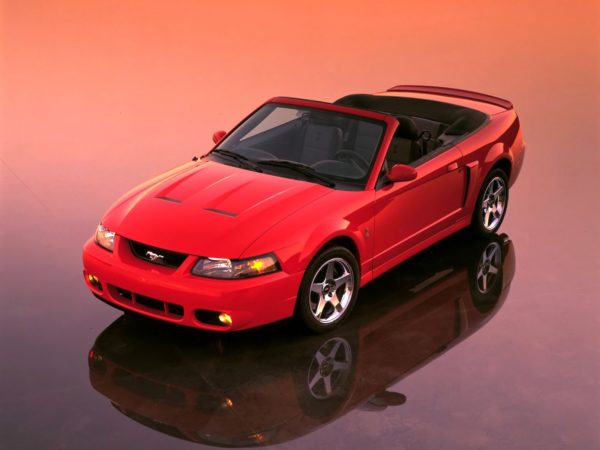
Actually not the end, we have three more generations to go. I know. You’ve been here for awhile. I’ll try to make it fast. By the early 90s, the Fox Body Mustang was a teenager and it was time for something new. Starting in 1994, Ford started producing the 4th generation of Mustang. They spent $700 million to update the Ford Fox Platform into the SN95. They put a particular focus on reducing the NVH (noise, vibration, and harshness) and improving how it handled from the previous generation by making changes to the front suspension. They also gave the car a makeover. Where the Fox Body Mustang was boxy, the SN95 versions were sleek. The interior featured a dual-cockpit layout, once again emulating the Thunderbird. In 1999, this makeover got made over itself with The New Edge. Celebrating the Mustang’s 35th anniversary, the sleek and smooth lines of the Gen 4 Mustang suddenly became sharp and mean. While mostly an exterior change, the New Edge Mustangs also got a little engine upgrade. The next generation did not retain the stylistic choices of the New Edge Mustangs.
Mustang S-197
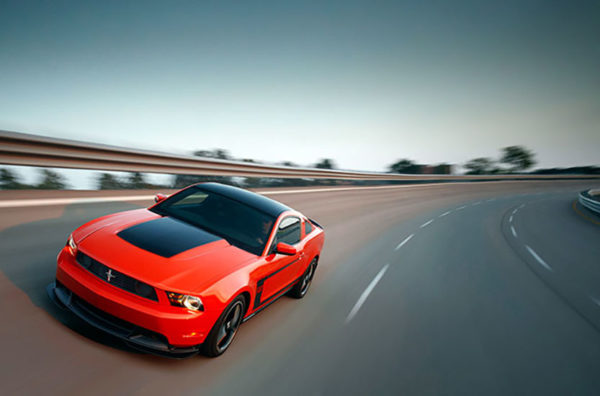
Generation 5 debuted in 2004 with a lengthened wheelbase and exteriors that harkened back to the first generation Mustangs. This style is referred to as “retro-futurism”. Wanting the car to be something unique, Ford used their new D2C Platform exclusively for the Mustang. It caused some controversy upon release due to the implementation of a live rear axle. Critics accused Ford of cheaping out by putting this less than state of the art technology into the new Mustang. Ford defended itself by saying that adding the newer independent rear suspension would add $5,000 to the car’s price tag. It also had the great misfortune to be the Mustang model produced during the Great Recession. In 2009, Mustang sales in the US dropped to its lowest number ever with only 66,623 sold. The Mustang got a facelift the next year that made the car more aerodynamic but the numbers never quite rebounded. In the end, it had the opposite problem of the Mustang II. Utterly loyal and reverent to the iconic first generation, this fairly well regarded Mustang was dropped into the world at the absolute wrong time and suffered for it.
Mustang Mach-E
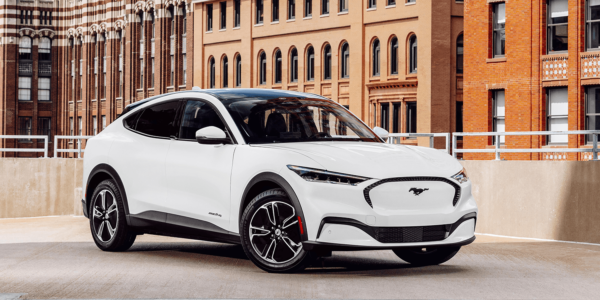
With the Mustang’s 50 year anniversary in 2014 came a new generation. So much of this generation calls back to the history of their predecessors. A culmination of decades of knowledge and circumstance and yet something brand new. The retro-futurism of the design has seemingly dropped the retro and focused on creating a look that calls forward rather than back. The live rear axle is gone, replaced by a newly designed independent rear suspension. Rear wheel drive, of course. And sadly, because 2020 happened, Gen 5 no longer has the worst selling year in Mustang history. But as we’ve learned, Ford’s always planning. Something new for the Mustang in Generation 6 went on sale in December 2020. The Mustang Mach-E is an electric crossover SUV, Ford’s very first electric car. How will the world react to this shiny new thing? Time will tell. But whatever the result, it has a place in a long and storied line of truly fascinating machines. Each important and iconic in their own way.

 Cart
Cart
 Help Desk
Help Desk



